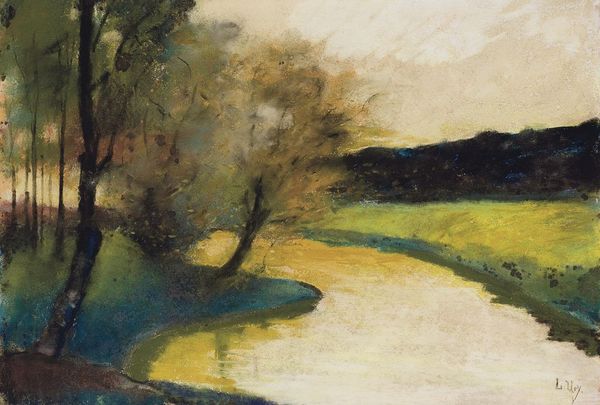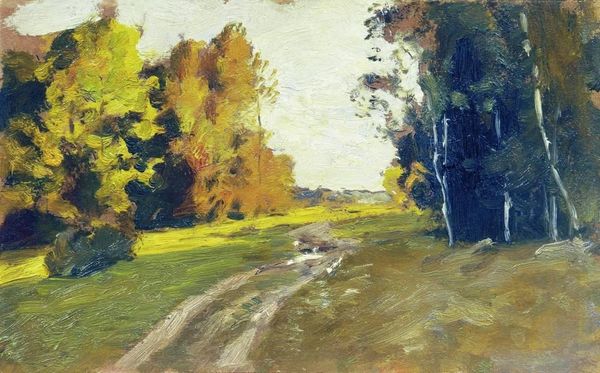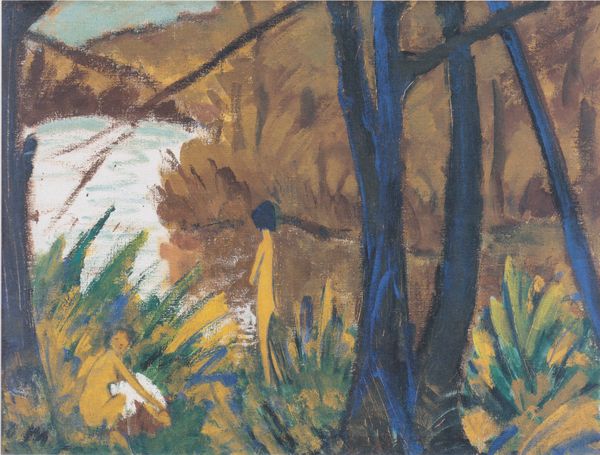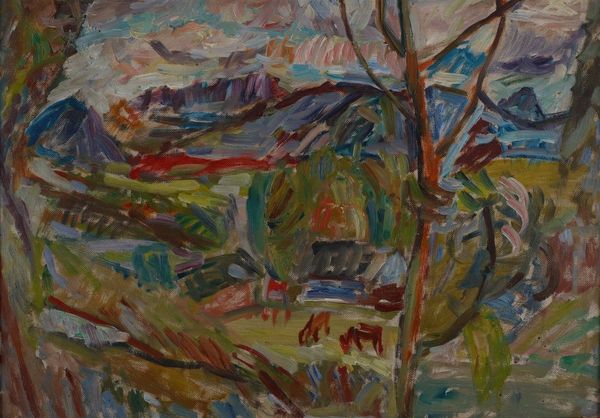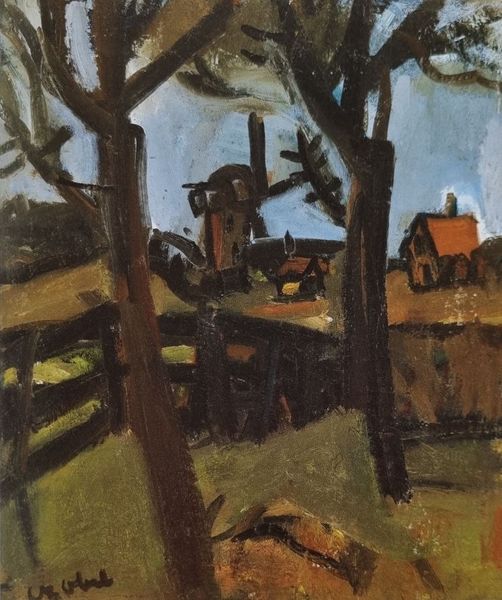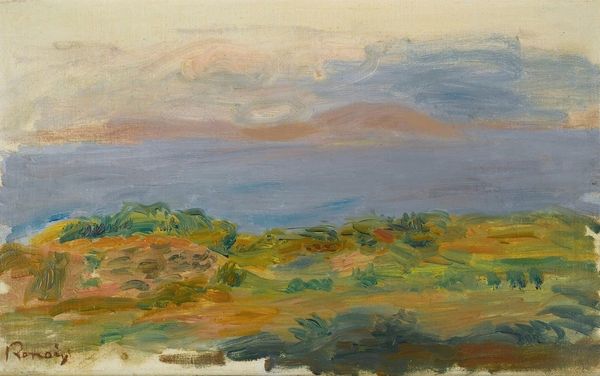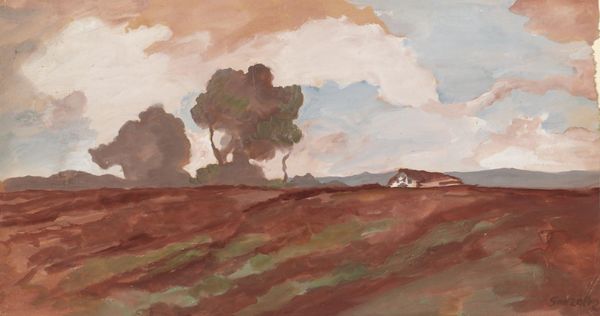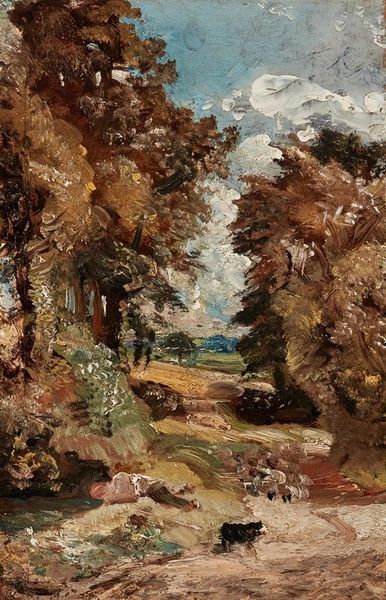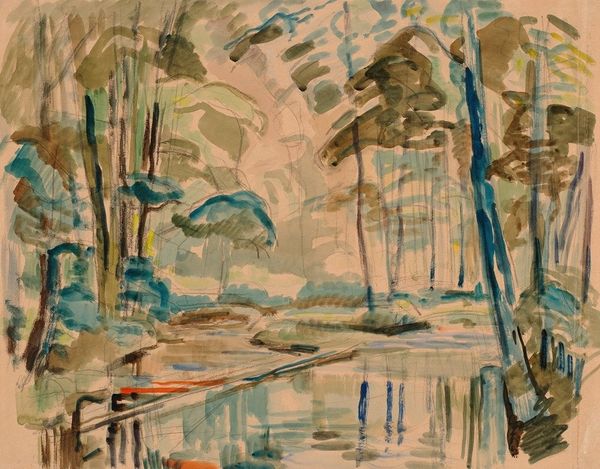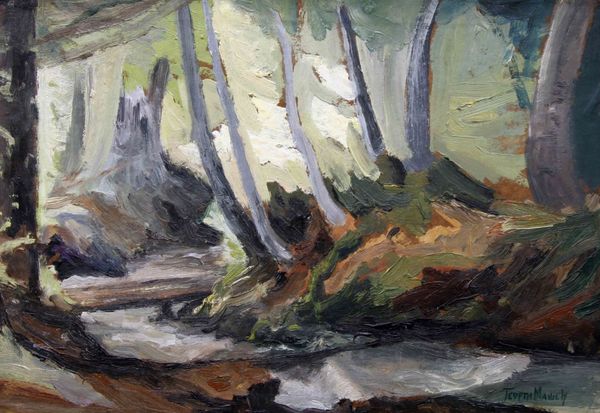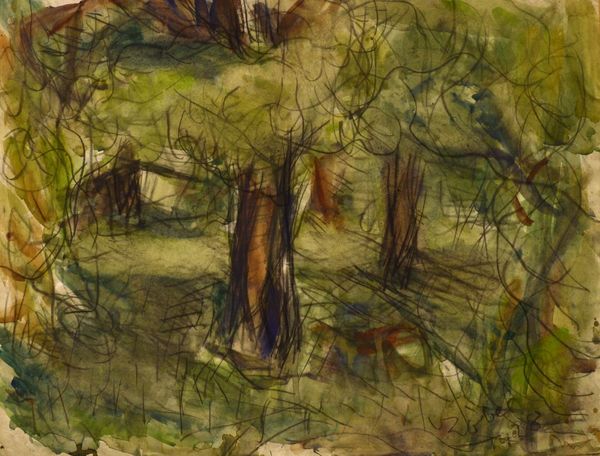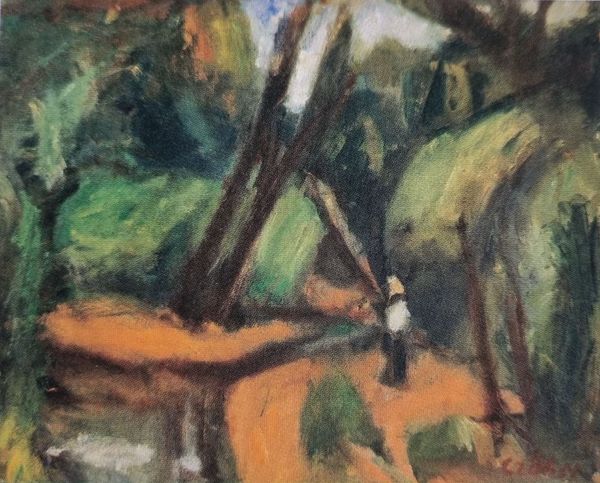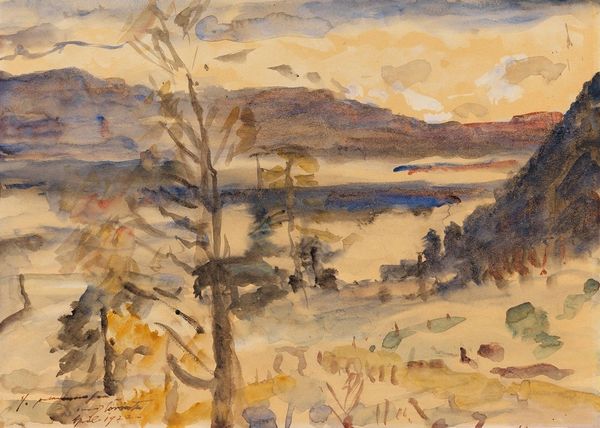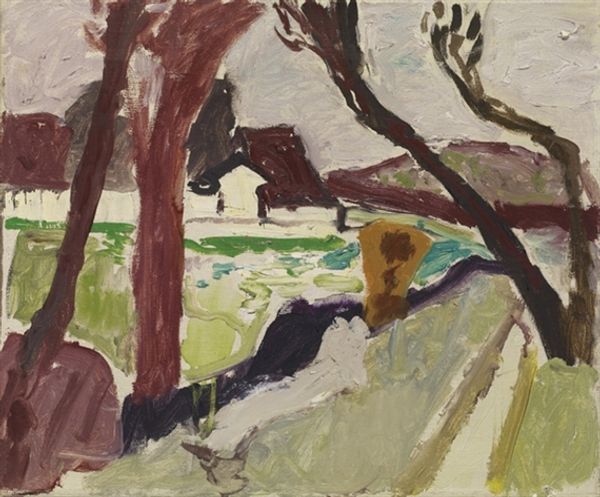
Dimensions: support: 406 x 743 mm
Copyright: © Tate | CC-BY-NC-ND 4.0 DEED, Photo: Tate
Editor: Here we have Ivon Hitchens’s "Damp Autumn," currently housed in the Tate Collection. I'm immediately drawn to the thick impasto; you can almost feel the weight of the paint. What's your perspective on this landscape? Curator: Notice how the artist uses broad strokes, almost aggressively, to build the scene. The materiality itself, the sheer volume of paint applied, speaks to the physical labor involved in its creation. Do you think this was a quick study or a more considered composition? Editor: It feels immediate but purposeful. Curator: Exactly. The texture isn't just representational; it's integral to the artwork’s meaning. It blurs the line between the landscape and the process of its creation. Editor: That's a great point. I hadn’t considered how the materiality directly informs the interpretation. Thanks!
Comments
Join the conversation
Join millions of artists and users on Artera today and experience the ultimate creative platform.
tate 8 months ago
⋮
In 1940 Hitchens and his family evacuated their bombed-out London home for Lavington Common near Petworth in Sussex, where he had often painted in the late 1930s. The woods there became the main subject of his art. While such works clearly follow the tradition of Thomas Gainsborough and John Constable, Hitchens was also interested in modern artists, in particular the Cubist Georges Braque. He wrote that his new ‘more settled life, with permanent roots in this soil, has led to a deeper search for the more abstract elements of a given subject’. Gallery label, August 2004
